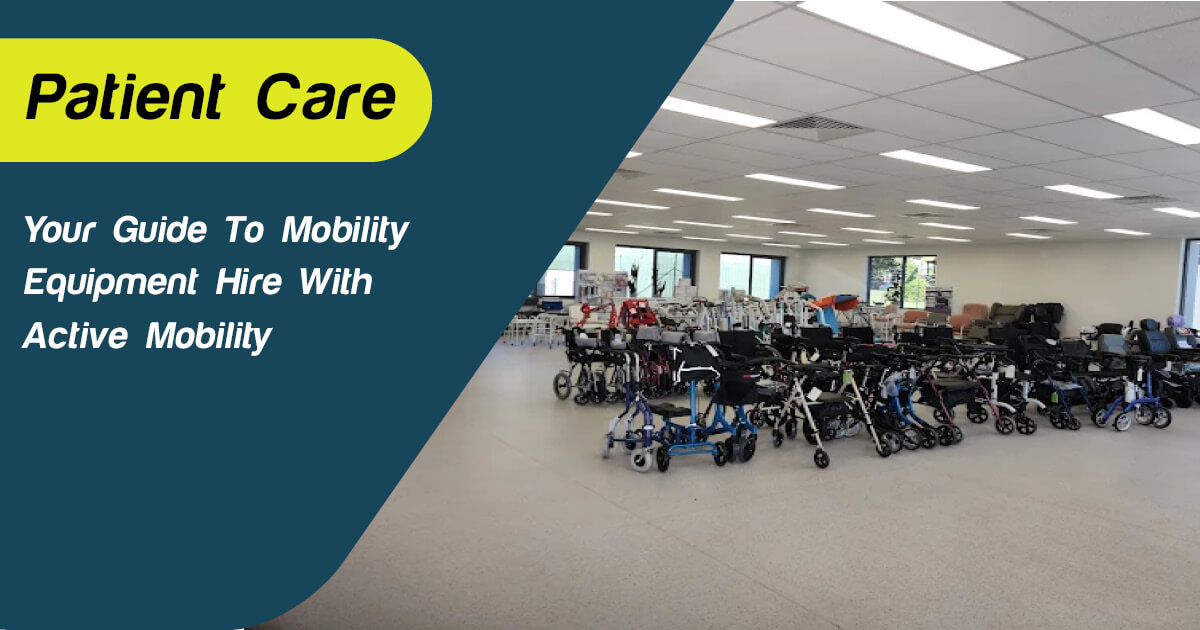
Share
If you rely on a wheelchair for everyday use, you will quickly notice when something isn’t quite right with your wheelchair. Whether you’re using a manual or electric wheelchair, even the slightest change can be quite noticeable… and concerning.
With this in mind, it’s valuable to learn the different parts of a wheelchair so you can take a moment to assess the situation and diagnose the problem. We always recommend talking to a technician when it comes to wheelchair servicing and repairs but with this knowledge, you can approach your technician and be more specific about your concerns.
In this article, we will share the parts of a wheelchair — both electric and manual — so you can gain a better understanding of how your wheelchair works and what to look out for in the event of a malfunction.
Parts of a manual wheelchair

Manual wheelchairs, compared to other mobility devices, are quite simple to learn. Above, we’ve detailed the essential parts of a wheelchair that you should know for monthly (or even daily) maintenance checks. Below, we explain why each piece is so important to check.
Push handles
The push handles are located at the back of your wheelchair. These are often rubber handles that are installed to make them more comfortable for whoever is pushing you along. After some time, the push handles of your wheelchair can become quite worn or dirty. These can easily be replaced by your technician at your next service.
Rear and front wheels
The rear and front wheels of your wheelchair are absolutely essential — without them, your wheelchair is useless! Your front wheels or “castor” wheels are more complex than the rear wheel because they’re designed for steering and can move in various different directions. Your rear wheels only move forward and backward.
If you are having trouble getting your castor wheels to behave themselves and go in the direction you want to go, be sure to get in touch with your technician as soon as possible. Castor wheels are essential for everyday use.
Push ring
Push rings or “hand rims” are the metal or plastic rims attached to the outside of your rear wheels and allow you to propel yourself forward. Everyday wear-and-tear can eventually cause dents, bends and cracks — this can be painful! If you notice any unpleasant wear and tear, be sure to have your push rings replaced.
If your push rings feel loose while you’re travelling, you might need to have them tightened with an open-end wrench or screwdriver.
Brakes
Brakes are designed to stabilise your wheelchair when transferring to other surfaces (e.g. your bed or couch) or if you would like to slow down to a stop. They can also help when you are pushing or lifting things.
Realistically, you should check your brakes monthly — ensure your brakes are secured tightly to the frame and apply the lock to check that it holds your wheels firmly in place. They should be easily activated. You can tighten your brakes with an open-box wrench or Allen key, but we recommend consulting your regular wheelchair technician to be safe.
Tip assist bar
Most manual wheelchairs come with an anti-tip bar (stops the chair from tipping back when self-propelling the wheelchair) or a tip assist bar (helps a carer tip the chair back to get the castor wheels over small obstacles).
If you don’t have an anti-tip bar, we recommend attaching one as this can prevent your wheelchair from tipping backwards and/or forwards. If you have anti-tip bars and can feel them dragging on the ground or slowing your speed, you may need to adjust them to sit higher above the ground.
Calf straps & footplates
Calf-straps are designed to stop your legs from falling off the back of the footplates.
Every now and then, check that your footplates are intact, tightened and can easily be released/flipped away (if applicable). You can use a screwdriver, wrench or Allen key to tighten loose bolts, but if the pins or bolts are looking worn, it’s time to consult your wheelchair technician.
Armrests, backrest and seat
When checking your seat and backrest, look for any wear, tears, stretched upholstery or any metal parts that are sticking out. You should also ensure the upholstery isn’t loose – this can cause postural support problems and discomfort.
Your armrests, on the other hand, are a little more complex. Your armrests ensure you have a good resting posture in your arms and shoulders. Each month, check that the arm supports are intact, tightened and can easily be released. We also recommend checking for sharp edges and parts that can cause harm — if this is the case, contact your technician as soon as possible.
Parts of an electric wheelchair

For the most part, the parts of an electric wheelchair are the same as a manual wheelchair but there are a few key differences that require regular maintenance e.g. the battery/electronics cover and the seatbelt. Below, we share some of the most important parts of an electric wheelchair for you to check each month.
Joystick
Joysticks are the most common control interface between you and your wheelchair. Joystick problems can cause a malfunction in your wheelchair, damage the electronics and even put you in danger.
Each month, turn off the controller, check the joystick and the rubber boot around the base of the joystick for damage. Then, check that the joystick returns freely to neutral without getting stuck and check that the controller clamp holds the joystick firmly in place. If anything seems awry with your joystick, contact a technician immediately.
Charging port
Without your batteries and your charging port, you may as well have a manual wheelchair! The charging port is where your batteries get their power, so it’s important to only use the charger that came with your wheelchair and inspect the charging cable once a month for any wear and tear.
Battery storage
Most power wheelchairs have a plastic cover or shroud to protect the electronics and battery of your wheelchair. It’s crucial to always keep the cover in place to avoid dirt and moisture getting inside your wheelchair — this can cause major malfunctions!
We recommend checking on the plastic cover or shroud of your wheelchair every day. Check that the cover/shroud is intact and undamaged and doesn’t jiggle when you tug on it. If the cover or shroud is loose, this puts your battery and electronics at risk.
Seatbelt
All power wheelchairs should come with a seatbelt for pelvic support, pelvic positioning and safety while travelling. Check that the buckle latches securely and that the hardware that attaches the seatbelt is undamaged. If your seatbelt relies on velcro, ensure that the velcro is in good condition and won’t slip if tugged. If this is the case, consult your wheelchair technician.’
Folding mechanism
The red level or “folding mechanism” is the manual override so the brakes on the chair can be manually overridden and the chair can be pushed manually. This is for emergency use only e.g. when the battery runs out of power on the go. This is especially important when the electronic braking system will not operate.
If you have any concerns, please contact our service and repair team today!
If your wheelchair isn’t acting the way it normally does, please book an appointment with our service and maintenance team in Silverwater, Sydney or Thornton near Newcastle NSW! Our technicians have a complete understanding of all the parts of a wheelchair and can diagnose the problem in a matter of minutes.
We can have your wheelchair back up and running in peak condition in no time.
Book a service appointment online or contact us on (02) 9649 2111 today!









